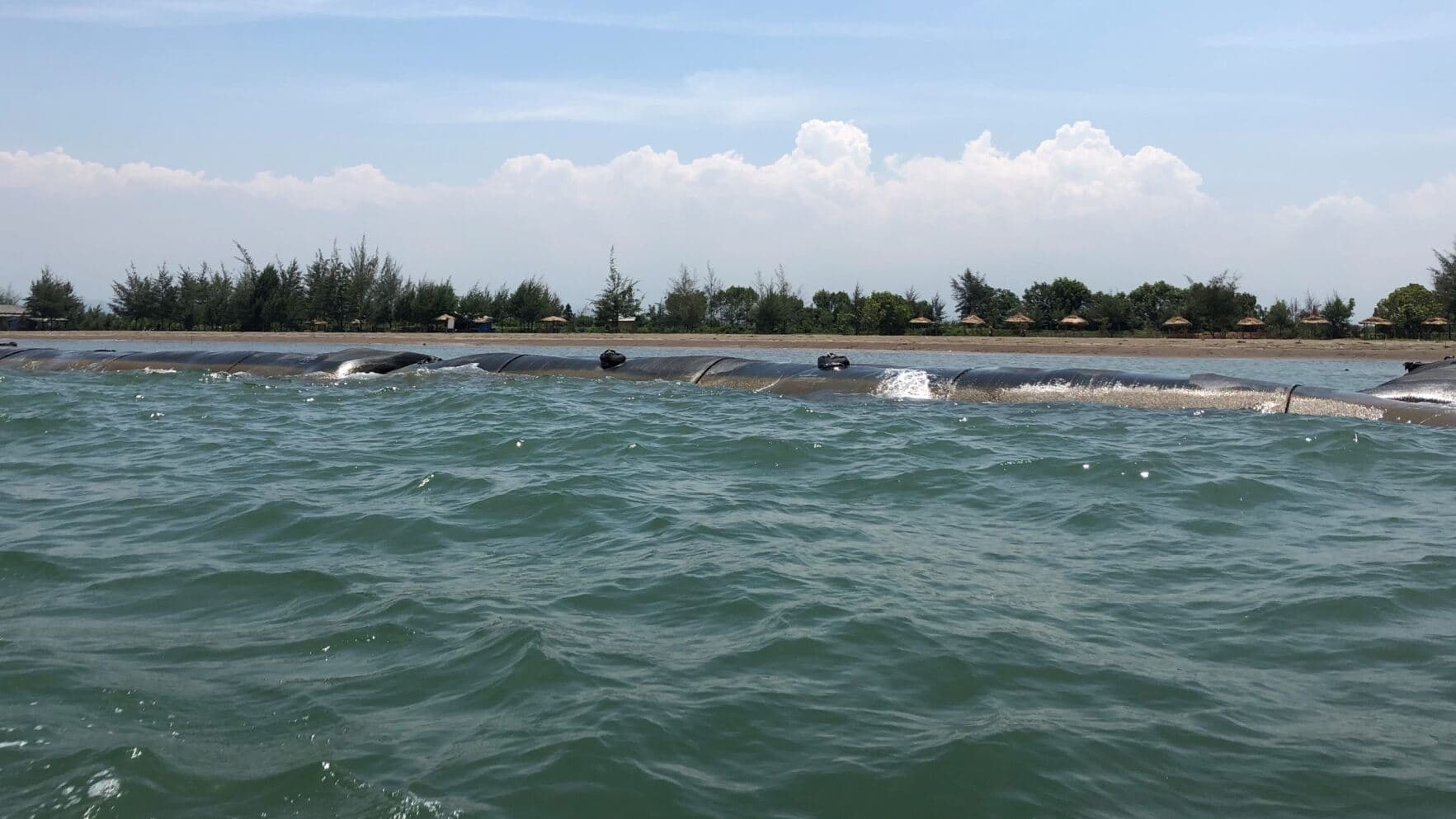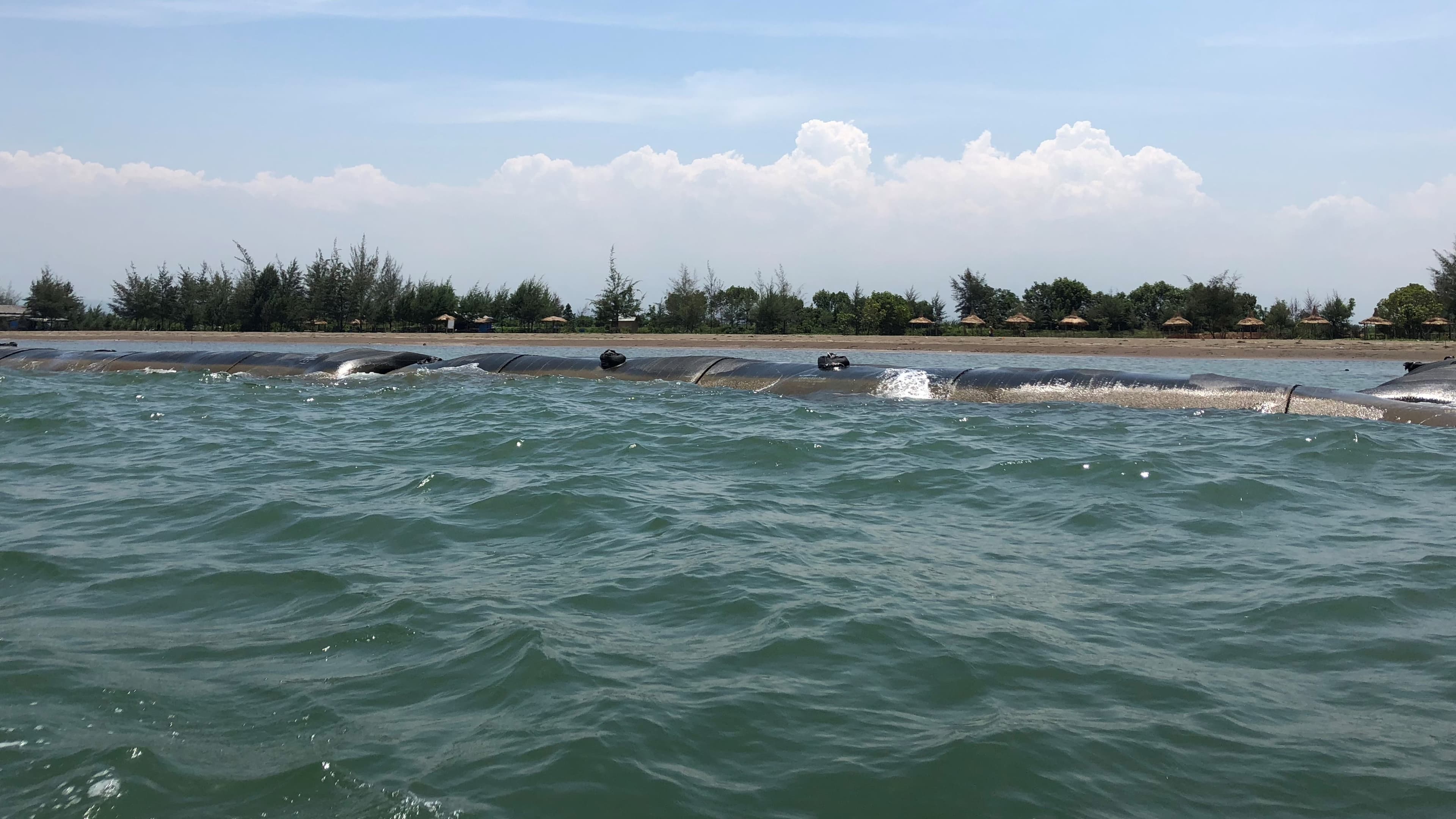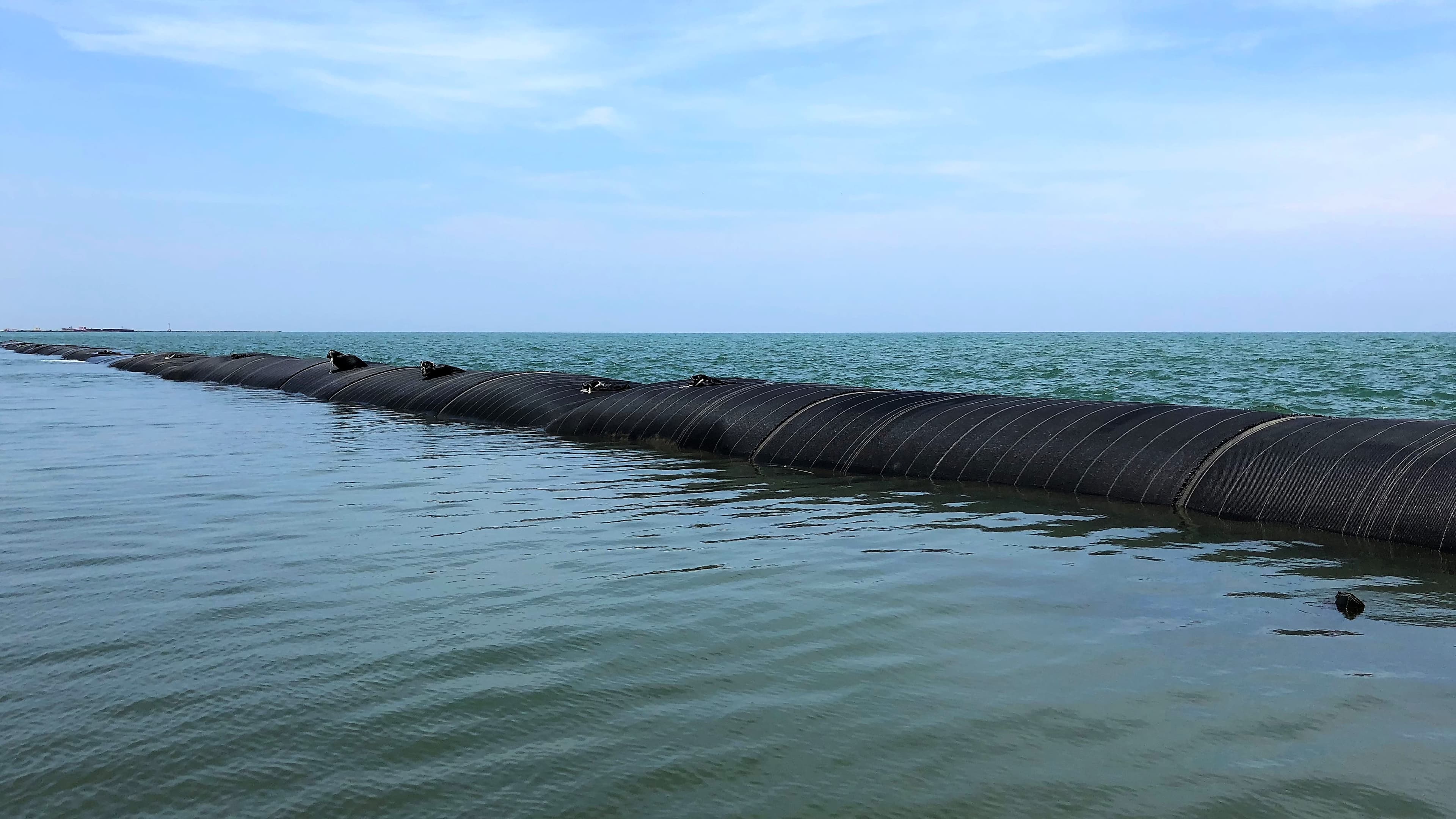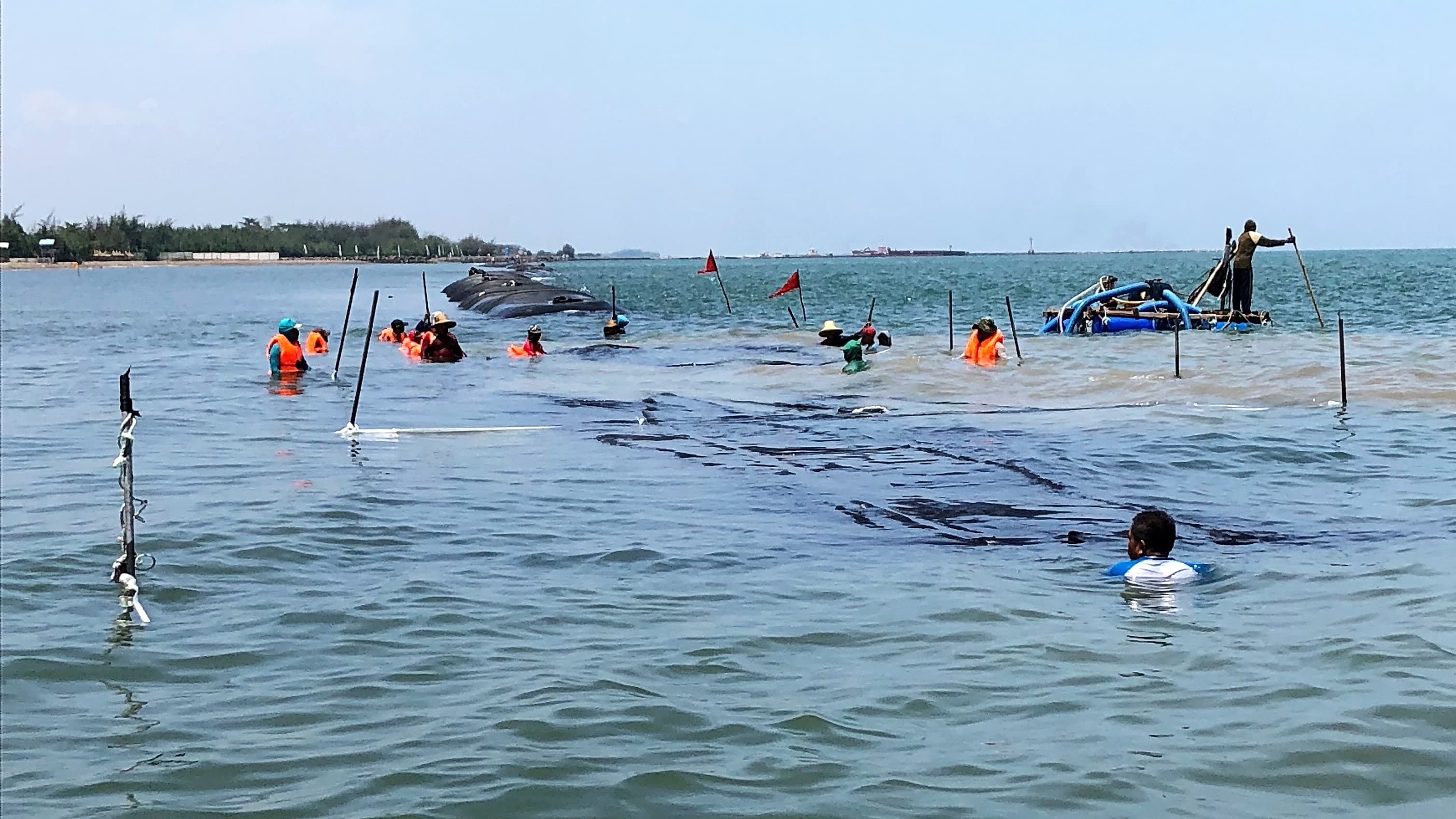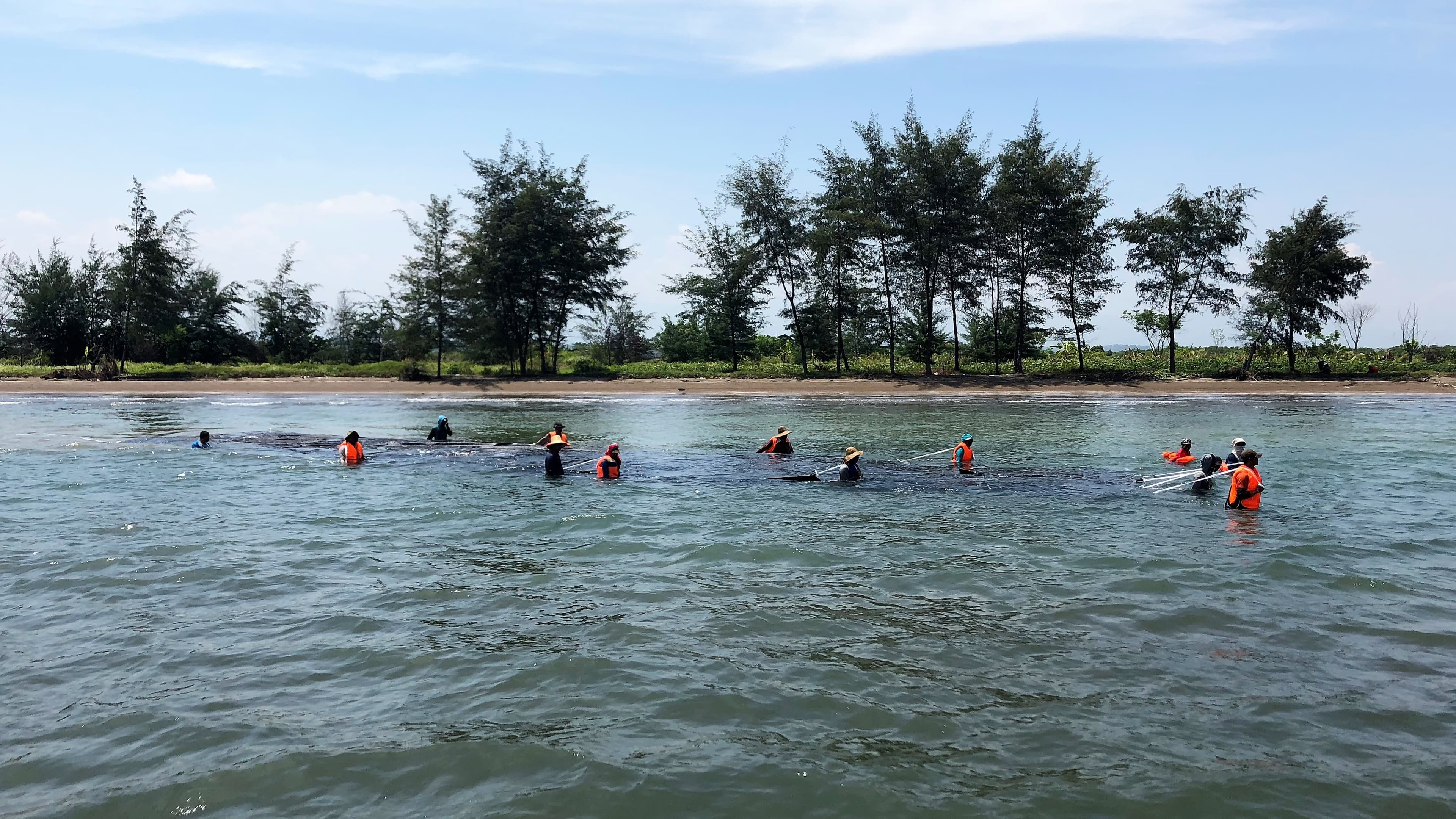Overview
Sigandu Beach is located on the North Coast of Java, approximately 4 km (2.5 miles) from the city center of Batang. Over the past 8 years, the beach has receded by approximately 5 m (16 feet) due to severe coastal erosion problems. This has adversely affected tourism in the area.
Challenge
To address the problem, the local government of Batang Regency proposed the use of breakwaters designed with the GEOTUBE® system as a shoreline erosion protection measure.
An offshore breakwater effectively reduces the wave energy approaching the shoreline and intercepts the movement of sediments. Conventionally, breakwaters are constructed using rock armor or concrete structures. However, due to the increasing cost of rock armor caused by scarce resources and environmental concerns, alternative methods such as GEOTUBE systems are being explored.
The GEOTUBE system consists of a primary GEOTUBE unit that sits on top of a scour apron. A GEOTUBE GT1000ML with a circumference of 9.5 m (31.2 feet) and a design filled height of 1.5 m (4.9 feet) acts as a breakwater to reduce wave energy reaching the shore. The length of the tube is 25 m (82 feet). The tube contains a non-woven inner liner that allows the use of finer fill materials. To prevent foundation scouring, which could result in tube instability, scour aprons (GEOTUBE GT500MSA) are installed at the base of the tube. The scour apron consists of a geotextile filter that passes beneath the tube and is anchored by two small pilot tubes located at both ends.
Solution
The seabed is first prepared for GEOTUBE installation. Grading is carried out to ensure a flat surface, and any protruding or sharp objects are removed to prevent damage to the geotextile tube. Bamboo poles are then installed at predetermined locations spaced at ±5.0 m (±16.4 feet) alongside the tube to serve as a guide and to restrain the tube during pumping.
The scour apron is unrolled on land, floated to the installation location, and attached to the bamboo poles using ropes to position it. Subsequently, a sand slurry pump is used to hydraulically pump sand (15%-20% sand ratio) into the pilot tubes of the scour apron through the inlet ports located on top of the pilot tubes. The pumping is stopped once the pilot tubes have reached the designed inflated height of 0.20m (7.9 inches), and the inlet sleeve is tied to prevent the outflow of sand.
The geotextile tube is then unrolled and floated above the installed scour apron, and it is tied to bamboo poles to position it. The filling pipe is connected to the first inlet port of the tube, with all other inlet ports closed except for the last one to allow water to overflow. Once the tube has reached its designed inflated height of 1.5 m (4.9 feet), the filling pipe is relocated to other inlet ports to achieve more even filling throughout the tube. Once the entire tube is fully inflated, all inlet port sleeves are closed and secured to prevent movement caused by wave action.
Result
The breakwater structure constructed with the GEOTUBE system at Sigandu Beach proved to be a cost-effective solution compared to conventional methods such as rock armor. It was successfully installed and effectively protects Sigandu Beach from erosion. The installation of the GEOTUBE system began in September 2018 and a total of 1.8 km (1.1 miles) length of tubes was installed by the end of 2018.
